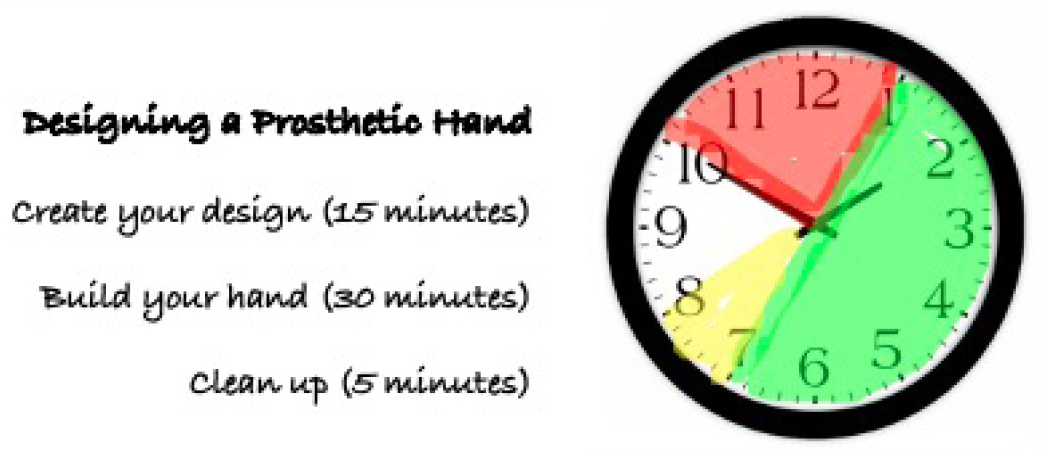practical research
“But, I’m not done yet!”
Time Management in the Science Classroom
Science Scope—March/April 2023 (Volume 46, Issue 4)
By Alison Betz Seymour
Has this ever happened in your classroom? The bell rings and half your students are running around in a panic. There are strings, straws, and parts of cardboard prosthetic hands everywhere. Time management is crucial when students plan and carry out investigations, precisely follow a multistep procedure, or conduct short research projects. Given that time management is important for students’ academic success (Alyami et al. 2021), what are teachers’ and students’ perceptions of students’ time management?
In interviews with middle school teachers and students across the United States, both groups shared that a significant portion of students are not proficient in time management and that procrastination and distractions are common contributors. Teachers’ and students’ perceptions differ in three key areas: classroom expectations for time management, reasons students struggle, and the skills needed to be proficient. These three areas suggest simple practices that support the development of student time management and contribute to academic success. Research has indicated that many students do not feel supported in their time management skills. When asked about teachers’ expectations, one student who was interviewed related that teachers pretty much expect that “[we] get everything done on time and be able to like work time management even in groups, which I often feel’s [sic] just wishful thinking and luck” (Betz 2022).
Here are some practical, simple suggestions. Explicitly talk about time management. We, as teachers, model time management in a tacit or implicit manner, but are less likely to verbally model what we are thinking or doing. A simple prompt when introducing an assignment is, “Let’s pause a moment and think about our time management.” The scientific method and engineering design process both provide a framework for discussing time management. Asking students approximately how much time should be spent on each step, including time to clean up before the bell rings, helps students plan their time. Teachers can develop these estimates with their class or have students do them on their own. Teachers can also have students rehearse their planning by verbally thinking through each step and estimating how long each step should take. Teachers can write the student-suggested times on the board, add them up, and have a discussion to see if the total works within the time available. What to do if activities go faster or slower than anticipated could also be discussed.
Prompts such as “Check in with your time, there are about 10 minutes left for this task” can also occur during the lesson. It is best to prompt students to check the time a few minutes before you expect them to transition to the next task to reduce the stress of feeling that they are already behind. Students and groups will work at different paces, and flexibility is needed so that learning is not adversely affected. If a student or group is falling behind, engage them in conversation about why and what are efficient next steps.
Scaffold students’ ability to visualize time by using an analog clock with time intervals marked with dry-erase pens. For example, you could instruct students to “use the red time zone for designing your prosthetic hand, the green for building and the yellow for cleaning up. Tomorrow we will start with testing” (see Figure 1). Digital clocks are perceived as being easier for telling time, but students may not fully understand what they are reading (Boulton-Lewis, Wilss, and Mutch 1997). Using an analog clock helps students perceive the time passing and their progress. You may find that some of your students are not proficient at reading an analog clock. Using one to plan their time management will help them develop this skill.

Example of an investigation scaffolded for time management using an analog clock.
Supporting time management in your classroom does not need to be difficult or time consuming. Some simple steps can support students and their overall executive function skills. These scaffolds are designed to be removed as students gain experience managing their time independently. The techniques discussed work well in science classrooms but are not limited to science investigations. You can also share them with other teachers for a more comprehensive school approach.
Alison Betz Seymour, EdD (abetzseymour@gmail.com) is a biology teacher from Scottsdale, Arizona, currently teaching in the United Kingdom at Winchester College, and is the president of the National Middle Level Science Teachers Association (NMLSTA).
Research Teacher Preparation Middle School


